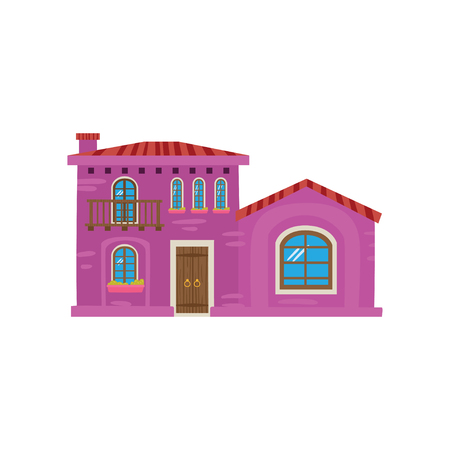Tracing the Legacy: Old Mohalla’s Historical Roots
Step into Old Mohalla, and you are instantly transported to a world where history whispers through every narrow bylane and weathered archway. This neighbourhood, nestled in the heart of India’s bustling cities, is a living testament to a legacy shaped by centuries of change, diversity, and resilience. Walk its streets and you’ll find echoes of the Mughal era—a time when artistry flourished and cultural exchanges gave birth to enduring traditions. Ornate jharokhas, intricately carved doorways, and age-old havelis stand as proud sentinels of a vibrant past, their facades still bearing the motifs of Mughal craftsmanship. Each brick here tells a story: from tales of royal processions winding through these lanes to accounts of traders who brought spices, silk, and stories from faraway lands. The rich tapestry of Old Mohalla is woven with threads of Hindu, Muslim, Sikh, and Jain influences—reflecting India’s syncretic spirit in everyday life. As you meander through the mohalla’s labyrinthine streets, notice how each corner reveals layers of heritage: ancient temples nestle beside Sufi shrines, while colonial-era buildings peek out from behind colourful bazaar stalls. This unique blend forms the backbone of Old Mohalla’s identity—a place where the past is not just remembered but lived every day.
Bazaars Alive with Colours and Chaos
Step into the heart of Old Mohalla, and you are instantly swept up in a vibrant swirl of colours, sounds, and energy. The bustling bazaars here are more than just markets—they are a living mosaic reflecting India’s rich heritage and daily hustle. Rows upon rows of stalls overflow with shimmering sarees, vivid dupattas, and handwoven textiles that beckon shoppers from every corner. The air is thick with the intoxicating aroma of masalas—cardamom, cumin, and turmeric mingle as spice vendors loudly tout their freshest blends. Street hawkers call out with irresistible offers, their voices blending into the symphony of auto-rickshaw horns and laughter. Every step in these lanes brings a new sensory delight: the crunch of hot samosas being fried at roadside carts, the sweet allure of jalebi swirling in sugar syrup, and the rhythmic clangs from local metalworkers. Here’s a glimpse into what makes Old Mohalla’s bazaars so unique:
| Element | Description | Local Flavour |
|---|---|---|
| Textiles | Brightly coloured fabrics, sarees, dupattas | Bargaining for “best price” with friendly banter |
| Spices | Stacks of aromatic spices & masala mixes | Vendors offering chai with a dash of cardamom |
| Street Food | Samosas, chaats, jalebis | “Ek plate chaat dena!” (Give me one plate chaat!) |
| Handicrafts | Pots, brassware, wooden toys | Artisans demonstrating their craft on-site |
The chaotic charm of Old Mohalla’s markets lies not just in what you buy but in how you experience it. Locals greet you with “Namaste,” exchange stories over cups of steaming tea, and invite you to try their favourite snacks. Whether you’re hunting for antique trinkets or simply soaking up the atmosphere, these bazaars capture the spirit of Indian community life—warm, welcoming, and always alive with possibility.

3. Fusion of Flavours: The Culinary Trail
Step into Old Mohalla’s vibrant food scene and discover a tapestry of tastes shaped by centuries of tradition and cultural mingling. Here, the air is thick with the aroma of sizzling tandoors, spicy chaats, and fragrant biryanis—all served from bustling roadside stalls or within the cool shadows of ancient courtyards. The Mohalla’s culinary landscape is where North Indian street delicacies like chole bhature, jalebi, and kachori meet time-honoured recipes passed down through generations, often kept alive by families who have called these lanes home for decades.
A Melting Pot on Every Plate
The magic of Old Mohalla lies in its ability to bring together diverse flavours—Punjabi masalas, Mughlai kebabs, Baniya sweets, and even a dash of Persian influence in some dishes. As you wander through narrow galis (lanes), you’ll spot vendors expertly frying samosas or ladling out steaming bowls of kadhi chawal to loyal patrons. Don’t miss out on the legendary lassi shops, where frothy glasses are topped with malai and garnished with pistachios—a true refresher during Delhi’s sweltering afternoons.
Hidden Gems & Family Secrets
Beyond the popular street fare, seek out the hidden eateries tucked behind old wooden doors or nestled in quiet courtyards. Here, grandmothers knead dough for parathas stuffed with secret spice blends, while uncles stir slow-cooked dals that simmer for hours. Many recipes—like nihari or shahi tukda—are cherished family treasures, their origins tracing back to royal kitchens and cross-cultural marriages within the neighbourhood.
A Feast for All Senses
Eating in Old Mohalla is not just about taste; it’s a celebration of colour, sound, and community spirit. The clang of metal plates, the call of chaiwallahs pouring milky tea into tiny kullads (clay cups), and the laughter echoing off weathered walls all come together to create an unforgettable food journey. Whether you’re a local reliving childhood memories or a visitor eager to explore authentic Delhi flavours, Old Mohalla offers a feast that bridges past and present—one bite at a time.
4. Unity in Diversity: Celebrating Mixed Cultures
The Old Mohalla is a vibrant mosaic of cultures, where people from various faiths—Hindu, Muslim, Sikh, and Jain—live side by side, weaving their traditions into the very essence of daily life. This harmonious coexistence is not just visible during major festivals but also in everyday interactions at bustling bazaars, street-corner tea stalls, and even in communal courtyards. Let’s take a closer look at how this unity is celebrated throughout the year:
Everyday Rituals & Shared Spaces
Wandering through the narrow lanes, one can witness neighbours exchanging festive sweets during Diwali and Eid alike, shopkeepers greeting customers with “Namaste” or “Salaam”, and children learning about each other’s customs from a young age. The mohalla’s architecture itself reflects this blend—temples, mosques, gurudwaras, and Jain derasars stand within walking distance, their bells and azaans forming the unique soundscape of the neighbourhood.
Major Festivals Across Communities
| Festival | Community | How It’s Celebrated in Old Mohalla |
|---|---|---|
| Diwali | Hindu/Jain | Lighting diyas, rangoli competitions, sharing sweets with all neighbours |
| Eid-ul-Fitr | Muslim | Mosque prayers followed by communal feasts; seviyan shared across households |
| Gurpurab | Sikh | Nagar kirtans (processions), langar (free kitchen) open to all communities |
| Paryushan Parva | Jain | Community prayers, acts of forgiveness, inviting friends for traditional meals |
Cultural Impact on Social Fabric
This blend of traditions doesn’t just create festive cheer—it fosters an environment where respect and empathy thrive. Elders often recount stories of joint celebrations and collective problem-solving during tough times. The mohalla thus stands as a living testament to India’s philosophy of “Unity in Diversity”, showing that cultural differences are not barriers but bridges towards a more inclusive society.
5. Handcrafted Heritage: Local Artisans and Their Legacy
The Living Tradition of Craftsmanship
Old Mohalla’s vibrant lanes echo with the rhythmic sounds of artisans at work, weaving stories through their hands. From the delicate zardozi embroidery that glimmers on traditional attire to intricate silver jhumkas and bangles crafted by local jewellers, each piece is a testament to centuries-old skills handed down through generations. These craftsmen are not just preserving a profession—they are safeguarding cultural identity, ensuring that every stitch and swirl carries forward the legacy of the mohalla.
Pottery and Earthen Grace
Potters’ wheels spin ceaselessly in hidden courtyards, shaping terracotta lamps and matkas that have been part of daily Indian life for ages. The earthy aroma of wet clay blends with the bustling bazaar air, reminding visitors of the intimate connection between craft and culture. Watching these artisans mould everyday objects is a glimpse into time-honoured practices that remain relevant in modern India.
The Heartbeat of Old Mohalla
Handicrafts here are more than souvenirs—they form the soul of Old Mohalla. The painstaking artistry behind handwoven shawls or hand-painted ceramics tells tales of resilience and pride. Supporting these local talents means nurturing a living heritage that binds together Old Mohalla’s past, present, and future. Whether you’re buying a piece or simply admiring the process, you become part of a shared story—one where tradition thrives amidst change.
6. From Past to Present: The Mohalla’s Modern Renaissance
In recent years, Old Mohalla has gracefully embarked on a journey of modern renaissance, blending its rich heritage with the pulse of contemporary India. This transformation is not merely about urban development but about preserving the soul of the mohalla while embracing new opportunities and influences.
Preservation Meets Progress
Walking through the narrow lanes, you will notice how ancient havelis and ornate jharokhas stand side by side with quirky cafés and co-working spaces. Local artisans, whose families have crafted wares for generations, now collaborate with young designers eager to reinterpret traditional motifs for today’s market. This delicate balance between preservation and progress is possible thanks to community-led initiatives that prioritize both heritage and livelihood.
Community Spirit Fuels Evolution
The residents of Old Mohalla take immense pride in their shared history, yet they are equally enthusiastic about welcoming change. Festivals such as Holi and Diwali have evolved into larger cultural showcases, inviting visitors from across the city to experience the unique blend of rituals, music, and street food. Meanwhile, start-up hubs and art galleries inject fresh energy into the area, making it a hotspot for creative minds.
Shaping Identity Through Local Initiatives
Several grassroots movements have emerged to champion responsible tourism, restore historic structures, and promote sustainable business practices. Heritage walks organized by local youth offer immersive experiences that celebrate the neighbourhood’s diversity—from Sufi shrines to Sikh gurdwaras and Jain temples—all coexisting harmoniously. These efforts ensure that Old Mohalla remains both a living museum and a thriving modern locality.
As Old Mohalla continues to evolve, its story stands as a testament to the resilience and adaptability of Indian communities. Here, tradition is not frozen in time; instead, it flourishes alongside innovation, ensuring that every visitor leaves with memories of timeless charm touched by the spirit of today’s India.


